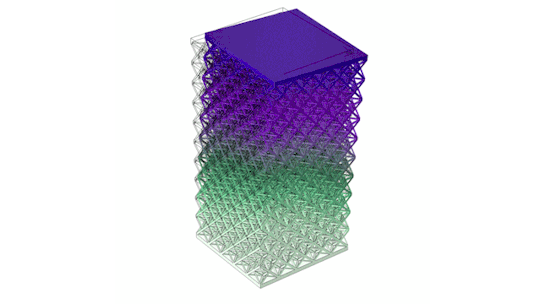#engineering polymers
Text

Sustainable Polymers: Advancements in Eco-friendly Materials"
The shift towards sustainability has spurred significant advancements in the development of eco-friendly polymers. Leading the charge are top polymer companies like Sun Polymers India, which are dedicated to creating materials that minimize environmental impact. These sustainable polymers are designed to be biodegradable, recyclable, and derived from renewable resources, offering a greener alternative to traditional plastics. Innovations in this field are not only addressing the global plastic waste crisis but also providing high-performance solutions for various applications. From packaging to automotive parts, sustainable polymers are becoming increasingly prevalent, helping industries meet their environmental goals without compromising on quality. As the demand for eco-friendly materials grows, the polymer industry continues to innovate, paving the way for a more sustainable future.
0 notes
Text
very smort autism creature with 11 PhDs
24 notes
·
View notes
Text

Making a little CB and a little Electra! I'm liking how these are turning out! =D
#stex#starlight express#lil trains making mini disasters#I'll try to make rusty but i can't promise nothing-#stex cb#cb the red caboose#electra stex#electra the electric engine#art#sculpting#trains#polymer clay#polymer sculpture#toy train
27 notes
·
View notes
Text
What are the materials used in weapons manufacturing?
Materials used in weapons manufacturing are chosen based on their mechanical properties, durability, and suitability for specific applications. The materials used in weapons manufacturing are:
1. Alloys, including steel, aluminum, titanium, nickel, and cooper.
2. Composites, including carbon fiber, glass fiber, and kevlar.
3. Ceramics, including alumina, silicon carbide, and boron carbide.
4. Polymers, including polyamide, polycarbonate, and polyethylene.
5. Specialized Coatings and Treatments, including ceramic coatings, teflon coatings, and phosphate coatings.
6. Explosives and Propellants, including RDX (Cyclotrimethylenetrinitramine), TNT (Trinitrotoluene), and composite propellants.
7. Electronic and Semiconductor Materials, including silicon, and gallium nitride (GaN).
Alloys
High-Strength Steel - Commonly used in the manufacturing of
Barrels: The main component of a firearm, responsible for propelling projectiles.
Receivers: The housing for the firearm's action, holding essential components.
Slides (pistols): The moving part that houses the barrel and holds ammunition.
Frames (pistols): The base of the handgun, supporting other components.
Bolts and carriers (rifles): Components involved in the firing cycle.
Springs: Essential for firearm operation, providing recoil and return forces.
Steels like 4140, 4340, and maraging steel are known for their toughness, high yield strength, and resistance to wear.............
#science#metals#alloys#materials#materials science#materials science and engineering#composites#ceramics#polymers#engineering#firearm
10 notes
·
View notes
Text
youtube
Low Density Polyethylene (LDPE) Production Overview
PRE.4. Free-radical Polymerization: Homogeneous.
Copyright: Royal Society of Chemistry (RSC).
#Materials Science#Science#Polymers#Polyethylene#Materials processing#Manufacturing#Video#Polymer Reaction Engineering#Youtube
10 notes
·
View notes
Text

Metamaterials are products of engineering wizardry. They are made from everyday polymers, ceramics, and metals. And when constructed precisely at the microscale, in intricate architectures, these ordinary materials can take on extraordinary properties.
With the help of computer simulations, engineers can play with any combination of microstructures to see how certain materials can transform, for instance, into sound-focusing acoustic lenses or lightweight, bulletproof films.
But simulations can only take a design so far. To know for sure whether a metamaterial will stand up to expectation, physically testing them is a must. But there’s been no reliable way to push and pull on metamaterials at the microscale, and to know how they will respond, without contacting and physically damaging the structures in the process.
Now, a new laser-based technique offers a safe and fast solution that could speed up the discovery of promising metamaterials for real-world applications.
The technique, developed by MIT engineers, probes metamaterials with a system of two lasers — one to quickly zap a structure and the other to measure the ways in which it vibrates in response, much like striking a bell with a mallet and recording its reverb. In contrast to a mallet, the lasers make no physical contact. Yet they can produce vibrations throughout a metamaterial’s tiny beams and struts, as if the structure were being physically struck, stretched, or sheared.
The engineers can then use the resulting vibrations to calculate various dynamic properties of the material, such as how it would respond to impacts and how it would absorb or scatter sound. With an ultrafast laser pulse, they can excite and measure hundreds of miniature structures within minutes. The new technique offers a safe, reliable, and high-throughput way to dynamically characterize microscale metamaterials, for the first time.
“We need to find quicker ways of testing, optimizing, and tweaking these materials,” says Carlos Portela, the Brit and Alex d’Arbeloff Career Development Professor in Mechanical Engineering at MIT. “With this approach, we can accelerate the discovery of optimal materials, depending on the properties you want.”
Portela and his colleagues detail their new system, which they’ve named LIRAS (for laser-induced resonant acoustic spectroscopy) in a paper appearing today in Nature. His MIT co-authors include first author Yun Kai, Somayajulu Dhulipala, Rachel Sun, Jet Lem, and Thomas Pezeril, along with Washington DeLima at the U.S. Department of Energy’s Kansas City National Security Campus.
Keep reading.
Make sure to follow us on Tumblr!
16 notes
·
View notes
Text

This is last year’s test my professor posted for review so for the record I’m not doing anything illegal by screenshotting it here but also I love this stand-in name for a mystery polymer
#polymers#polymer science#materials science#engineering#chemical engineering#chemistry humor#chemistry
62 notes
·
View notes
Text

I spent like way too many hours on this class project making a pickguard for my bass out of carbon fiber
I made a before and after tiktok
#carbon fiber#bass#fender#carbon fiber composite#guitar#pickguard#engineering#hand layup#epoxy resin#mechanical engineering#class project#polymer#diy#craft
27 notes
·
View notes
Photo

Creatures of Far'Kour - Mindreaders - Watcher
The Watcher. The much less lethal variety of Mindreader, it hunts by feeding its target their worst fears. The modern types that wander the plains of Far'Kour were trained by the Predecessors to be more docile, but they are quick to decide who is or isn't a threat.
"Be careful in the woods. The dark is the mind reader's domain. All your fear, all your insecurities, it will use to hunt you down." - Business Liaison Lefantis Sr. "Mindreaders? Oh, those things. Listen, don't fight it none and don't think bad thoughts when it's looking at ya, it'll leave you alone. Hell, you feed it some meat and it'll even help you when you get lost!" - Irdavez Mirtoka, Head Biologist of the Far'kour Research Institute
Posted using PostyBirb
#digital art#wolf#alien#monster#sci fi#ttrpg art#so these creatures#the reason they have such big teeth is interesting#see they used to have much smaller teeth#and still do underneath their combat jaws#but after SecComm tried to slay the Predecessors#they had been biologically engineered for combat#their teeth are made of a plant-made polymer capable of ripping through tungsteel alloy#a metal I'm making up that is on equal levels of armor capabilities to depleted uranium plate#this polymer is one of many mysteries of Far'Kour#as all attempts to imitate it have failed#and among other qualities#it is extremely receptive to psychic input#which is how the Mindreaders are able to 'deactivate' the combat jaw#very soon though#the party will be facing high ranking soldiers who have discovered the secret to wielding the polymer#and will be extremely dangerous
4 notes
·
View notes
Photo


Slowly but surely the engine is coming together
6 notes
·
View notes
Text
Researching anything niche in a highly marketable industry (like automotive) is so annoying. Every company just says "our product is the best because it works and it's a secret!" and it's like. Please, I promise No One cares about WHAT "proprietary material" you are using for your antimicrobial car touch screens. No one EXCEPT my professor for some reason, who is grading this research, so could you please be a dear and not just list essentially "it works because science and we say so" on your Technical Data Sheet??
#materials engineering#don't get me started on the circularity of research articles#i get no one wants their ideas stolen but#who is out here stealing antimicrobial film applications for automotives???#we already know things that work?? Zinc ionization??#so ready to not be doing research i don't care about anymore#polymers and cars are the absolute worst
3 notes
·
View notes
Text
How Polymers Are Revolutionizing the Medical Field: Breakthroughs and Benefits
Polymers are revolutionizing the medical field by providing materials that are both versatile and biocompatible. Their unique properties make them ideal for a wide range of medical applications, from surgical instruments to drug delivery systems. The polymer industry in India is playing a pivotal role in advancing these technologies.
One of the most significant breakthroughs in medical polymers is the development of biodegradable polymers for drug delivery. These polymers can be designed to release medication at a controlled rate, improving the efficacy and safety of treatments. Additionally, they reduce the need for multiple doses, enhancing patient compliance.
Polymers are also used in the creation of prosthetics and implants. Their flexibility and strength allow for the design of devices that closely mimic the natural properties of human tissues. This results in improved patient outcomes and a higher quality of life for those requiring medical implants.
In wound care, polymers are used to create advanced dressings that promote healing and prevent infections. These dressings can be impregnated with antimicrobial agents, providing an added layer of protection for patients.
Overall, the impact of polymers in the medical field is profound. As research and development continue, we can expect even more innovative applications that will further improve patient care and treatment outcomes.
0 notes
Text
#Consulting Engineering#Consulting and Engineering Services#engineering consultants#Consulting Services#Systems Integration Services#Sulphur Polymer Production
0 notes
Text
Enhance Your Polymer Products with High-Quality Masterbatch for Engineering Polymers
Learn about quality masterbatch for engineering polymers, which is designed to improve the look and functionality of your polymer products. Specialized masterbatches designed for tough engineering applications provide exceptional color constancy and longevity. Boost the quality of your products using modern methods.
Get in touch now to discover more and locate the ideal masterbatch for your requirements!
0 notes
Text
Additive manufacturing, also known as 3-D printing, is a transformative approach to industrial production that is making lighter, stronger parts and systems a possibility.
This article will delve in the concept of additive manufacturing, its types, and the materials used in additive manufacturing.
What is the additive manufacturing?
Additive manufacturing is processes used to create a three-dimensional object by laying down successive layers of material under the control of a computer. Objects created can be of almost any shape or geometry and are created from digital model data. It is intended to construct a part from scratch but raw material, using digital data coming from a CAD file.
The familiar term of additive manufacturing is 3D printing. This is a popular type of additive manufacturing.
#science#materials science#engineering#materials science and engineering#materials#metals#polymers#composites#ceramics#biomaterials#3D printing#additivemanufacturing
1 note
·
View note
Text

Scientists develop a polymer film inspired by spider silk to connect biological tissues with electronic devices
A team of materials scientists affiliated with several institutions in Singapore and China has developed a spider-silk-inspired polymer film that may be used to connect biological tissues with an electronic device. Their results are reported in the journal Nature. The editors at Nature have published a Research Briefing outlining the work in the same issue.
Scientists have been working to develop a material to connect biological tissue with an electronic device for quite some time—such a material would allow for medical implants that would not be rejected, for example, or connections of prosthetic limbs or devices to control organs, such as heart pacemakers. Most such efforts have fallen short, however, due to problems with stiffness and immune response or the introduction of other safety issues.
Read more.
#Materials Science#Science#Polymers#Spiders#Spider silk#Biomaterials#Biomimicry#Tissue engineering#Electronics
16 notes
·
View notes